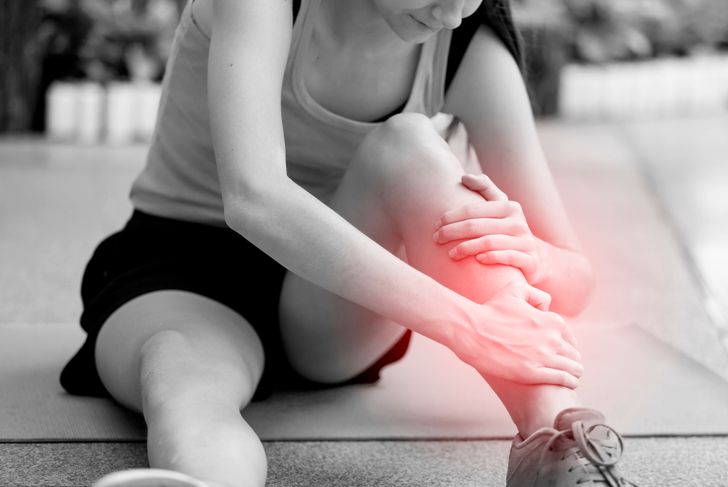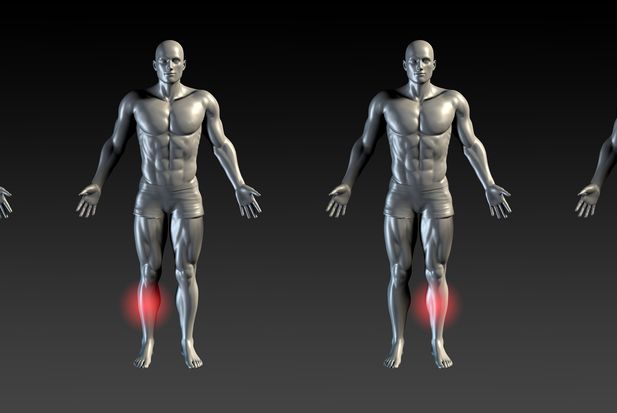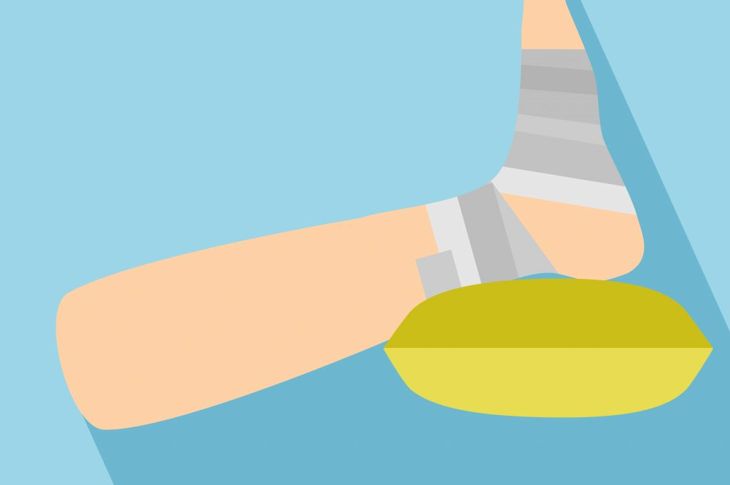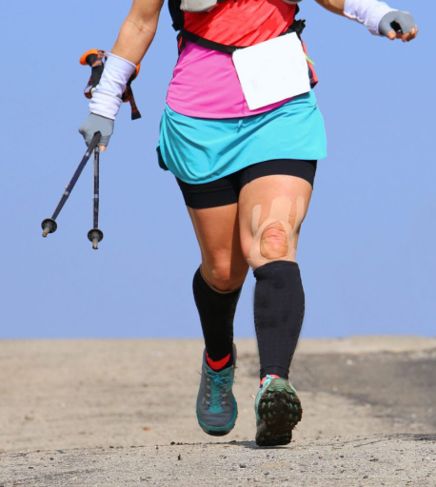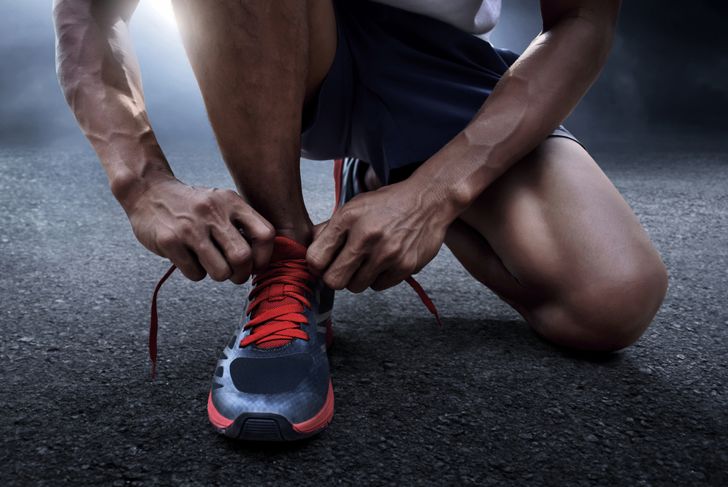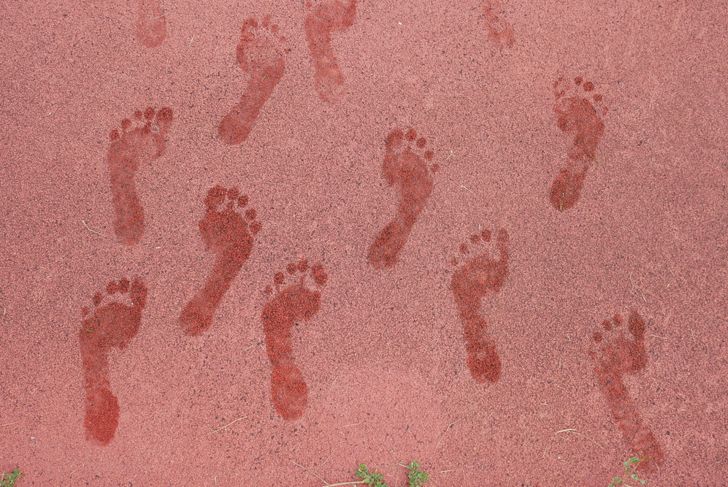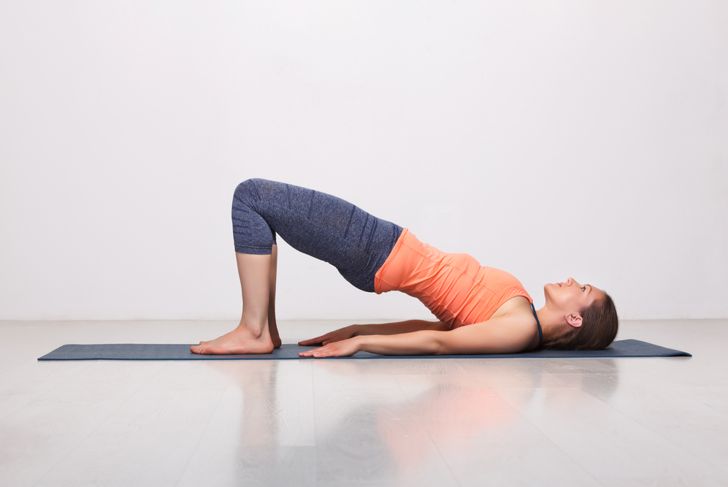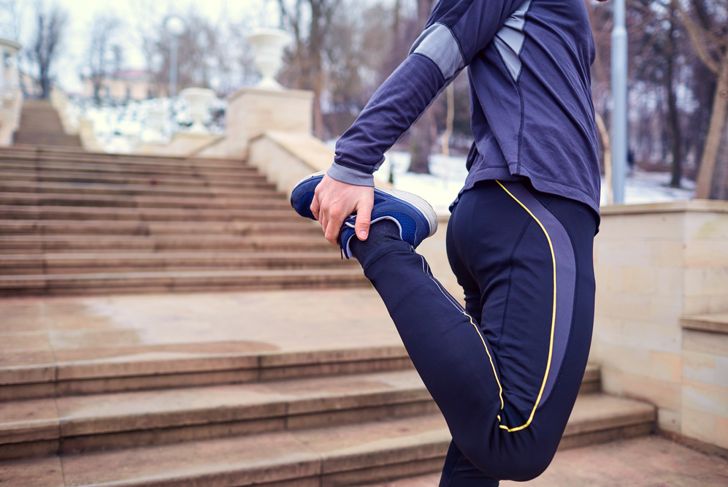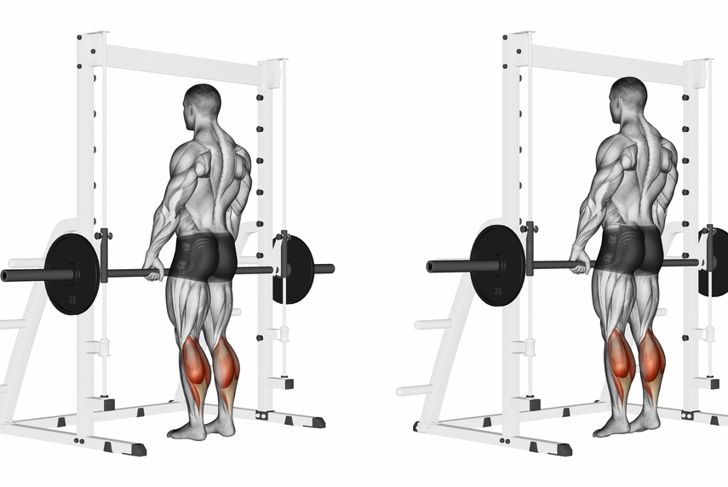The term shin splints is the catch-all term for lower leg pain that occurs below the knee either on the front outside part of the leg (anterior shin splints) or the inside of the leg (medial shin splints). Your doctor may refer to the condition as medial tibial stress syndrome (MTSS). Shin splints occur most often with beginning runners who do not build their mileage gradually enough or seasoned runners who change their workout regimen. The cause of shin splints can often be explained in four words: too much, too soon.
Get a Correct Diagnosis: Shin Splint or Stress Fracture
To begin the most effective treatment, it’s essential to find out if your shin pain is due to shin splints or stress fractures. The pain caused by shin splints is different than a stress fracture. It tends to a searing pain along the length of the shin. Some runners describe shin splint pain as a tight, achy pain, as opposed to stress fracture pain, which is more of a deep, throbbing pain. Also, shin splints normally aren’t painful while walking or hopping. In fact, most runners with shin splints only notice sharp pain while running fast. Stress fractures cause pain while walking or running at any speed. It’s best to talk to your doctor, self-diagnosis is never a good idea.
What Are Shin Splints?
Shin splints are a cumulative stress disorder. Repeated pounding and stress on the bones, muscles, and joints of the lower legs prevents your body from being able to repair and restore itself naturally. Small tears and inflammation cause the pain associated with shin splints in the muscles surrounding the tibia, or shin bone. The muscles become torn and inflamed when runners, dancers, or other high-intensity exercise enthusiasts do too much too soon.
Causes of Shin Splints
There can be a number of reasons for shin splints including overpronation (flat feet), not stretching enough, wearing worn shoes, or excessive stress placed on one leg or one hip from running on cambered roads or always running in the same direction on a track. Usually, one leg is involved, and it is almost always the runner’s dominant one. If you’re right-handed, you’re usually right-footed as well, and that’s the leg that’s going to hurt.
Initial Treatment
Shin splints normally require that you take a break from certain physical activities and give your legs time to rest. The suggested amount of downtime is typically about two weeks. During this time, try to keep your legs elevated whenever possible, using ice packs to reduce swelling. Take an over-the-counter anti-inflammatory, such as ibuprofen, naproxen sodium, acetaminophen. Use a foam roller to massage your shins. Check with your doctor before restarting any activities. It also a good idea to consider cross-training. Ride a bike, swim, or run in a pool.
If You Decide To Keep Running
When you are first diagnosed with shin splints, it’s best to stop running, or at least change how you run. You do this by lessening the running distance, running at a slower pace, and running on a flat surface. If you do decide to continue running, be sure to wrap your leg(s) beforehand. Using either an Ace bandage or athletic tape, start above the ankle, wrapping around the shin to directly below the knee. By wrapping your shin, you’re binding the tendons against the shaft of the shin to prevent stress as you run. Continue to wrap your leg until the pain goes away.
The Most Important Running Equipment: Shoes
It’s crucial to wear good running shoes, shoes that specifically fit your foot type. Correct shoes with shock absorbing insoles will help prevent a repeat of shin splints as well as other running injuries. If you are an overpronator (flat-footed) then you need to look for motion-control or stability shoes with firm,multi-density midsoles that limit pronation, and, perhaps, add over-the-counter orthotics or arch supports. If you have a high arched foot, look for lightweight trainers because they tend to allow more foot motion. Those with extremely high arches may need to wear orthotics.It’s also a good idea to have two pairs of running shoes and alternate wearing them to vary the stresses on your legs.
The Foot “Wet Test”
Because wearing the proper running shoe is so crucial to preventing shin splints, it’s important for you to determine what kind of arch you have. An easy way to test which you have is the “Wet Test.” It only takes a little water, paper, and about five minutes of your time. First, lay out the paper; a dark color often works best. Try a brown paper bag from your local grocery store. Get the bottom of your foot wet, step onto the paper, and step off. Based on the amount of footprint you see, you will be able to tell your arch. If much of the sole of your foot is visible, then you are a pronator. If just the outside edge of your sole appears, then you are likely a supinator. If it looks to be well balanced, you probably have an efficient neutral arch.
Exercises To Prevent Shin Splints
One way to prevent shin splints is to strengthen the calf and hip muscles, especially the hip abductors. An easy and effective calf strengthening exercise is Calf Raises. Place your toes on the edge of a curb or stairs. Slowly lower yourself and raise yourself up again. Repeat this 25 times. This will strengthen your calf muscles and help prevent shin splints. The Bridge is an effective hip strengthening exercise. Lie on your back; knees bent, feet flat on the floor hip-width apart, arms relaxed at your sides. Lift your glutes off the floor, pushing with your heels, so your body looks like a straight line from your knees to your shoulders. Squeeze your glutes and abs, hold for two seconds, then take three seconds to slowly lower back to the floor to the start position. Repeat 25 times.
Before Workout Stretches
No matter what exercises you do, it’s important to always stretch before working out. Try these two effective shin warm-ups. Kneel on a carpeted floor, legs and feet together, and toes pointed directly back. Slowly sit back on your calves and heels, pushing your ankles into the floor until you feel a tension in the muscles of your shin. Hold for 10 to 12 seconds, relax and repeat. In a sitting position, trace the alphabet on the floor with your toes. Do this with each leg. Or alternate walking on your heels for 30 seconds with 30 seconds of regular walking. Repeat four times. These exercises are good for both recovery and prevention. Try to do them three times each day.
Steps to take to avoid getting shin splints
- Wear shoes that fit well and offer good support.
- Use shock-absorbing insoles.
- Avoid running, walking, or general exercising on hard or slanted surfaces or uneven terrain.
- Increase exercise intensity gradually.
- Warm up before exercising.
- Be sure to stretch properly.
- Don’t just do aerobic exercise, do strength training specific exercises that build calf muscles.
- Never work through the pain, stop at the first sign of a shin splint.
Any intensive exercise program requires strengthening of all surrounding muscle groups. Workouts should be varied to avoid overuse and trauma to any particular muscle group. You should refrain from any intense exercise program if severe muscle pain or other physical symptoms develop.

 Home
Home Health
Health Diet & Nutrition
Diet & Nutrition Living Well
Living Well More
More